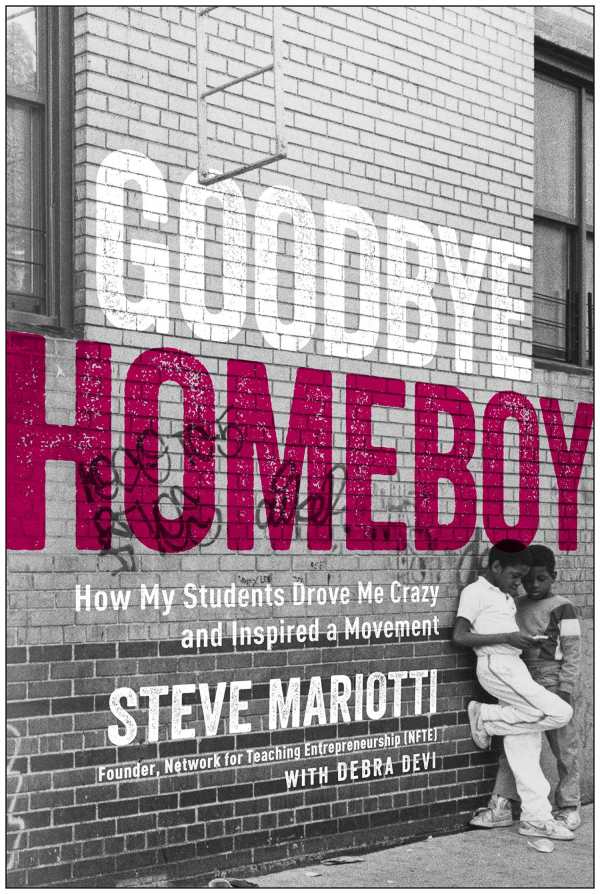Goodbye Homeboy
How My Students Drove Me Crazy and Inspired a Movement
Goodbye Homeboy is a touching, thought-provoking memoir about teaching at-risk youths.
Steve Mariotti’s passionate memoir Goodbye Homeboy is about teaching low-income, at-risk youths; it argues for imparting the value of entrepreneurship education.
Entrepreneur Steve Mariotti came to teaching in a roundabout way. After being mugged by a group of teenagers and developing a subsequent fear of them, his doctor (an advocate for extreme exposure therapy) advised him to become a high school teacher in disadvantaged neighborhoods.
What was supposed to be a short-lived experience became a calling when Mariotti realized that financial and entrepreneurship education could be the key to sparking an interest in learning among the youths. He was assigned to teach students who had been pushed out of the school system for reasons both violent and not. All had been deemed special education students. The year and a half they spent together in a spare room in the Department of Buildings constitutes the central story of the book.
Giving students the tools to rise above poverty became Mariotti’s obsession. Within ten years, he was running the Network for Teaching Entrepreneurship (NFTE)—as his students called it, “Nifty.” Two fellow former teachers who’d worked with Mariotti became a fundamental part of NFTE as well, bringing their own gifts with connecting to students. But it’s students who are the highlight of the book. Shana, Miguel, Anton, Mariana, Earvin, and Victor are particularly vibrant within it; their personalities are strong, and the narrative often focuses on them.
The value of Mariotti’s educational model is validated by the recorded results: most of the students who participated in NFTE conquered their academic difficulties. They started small businesses, going on field trips to make wholesale purchases of goods to then sell at retail prices. Becoming entrepreneurs gave the students their own money, hope, and a belief in themselves. Many of them grew up to fulfill needs in their neighborhoods, using the entrepreneurial skills they learned in school.
A flash forward at the end of the book describes their current lives and evinces how much harder society has to work to protect children in vulnerable situations. As Goodbye Homeboy reminds its audience: few can muster an interest in school when they’re hungry, homeless, have to contend with racism, or believe they won’t reach their twenty-first birthday. While many NFTE participants went on to own their own businesses and have families, others wound up in prison, and the question of how different things could’ve been for them if they’d been helped earlier arises.
Straightforward and concise, the book’s language is direct, open, and breezy, with flashes of humor. Painful stories are present, too, especially that of the senseless murder of two of Mariotti’s students and of pioneer musician, Scott La Rock, who’d served as a mentor to the class. This results in a heartfelt, moving, and often enraging story told on the kids’ behalf.
The events of the book are related in a clear, organized manner. The story is easy to follow, and there are few unnecessary details, although several pages dedicated to Mariotti’s meetings with Ayn Rand and a throwaway mention of Donald Trump do not have significant relation to the central story.
Goodbye Homeboy is a touching, thought-provoking memoir about the importance of teaching entrepreneurship to at-risk youths to help them rise out of poverty.
Reviewed by
Carolina Ciucci
Disclosure: This article is not an endorsement, but a review. The publisher of this book provided free copies of the book and paid a small fee to have their book reviewed by a professional reviewer. Foreword Reviews and Clarion Reviews make no guarantee that the publisher will receive a positive review. Foreword Magazine, Inc. is disclosing this in accordance with the Federal Trade Commission’s 16 CFR, Part 255.

